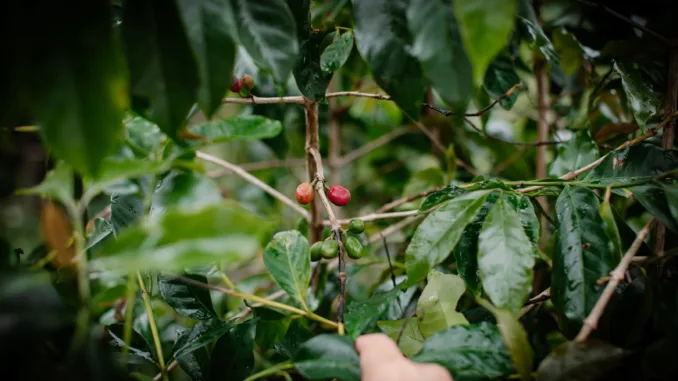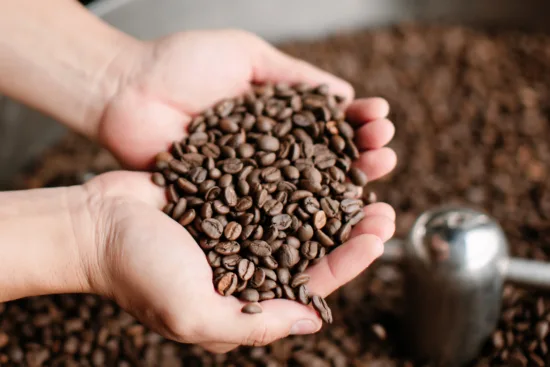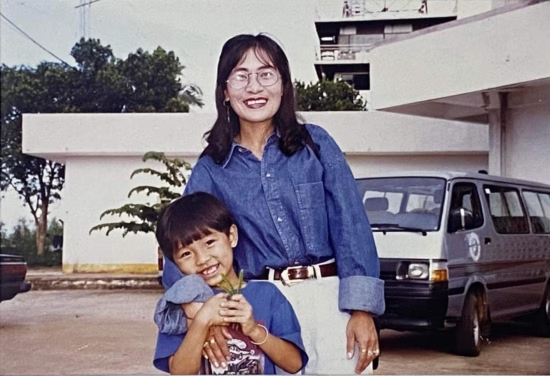
The Vietnam War had a devastating effect on Vietnamese coffee production. Here’s how the nation began to heal and became a major exporter once again.
BY EMILY JOY MENESES
BARISTA MAGAZINE ONLINE
Photos courtesy of Vince Nguyen
Much like its history, Vietnam’s coffee culture is rich, grounded in tradition and resilience. While today the Southeast Asian country ranks as one of the world’s top coffee producers, the Vietnam War significantly impacted their economy, infrastructure, and agriculture. It would take decades for these deep scars to heal.
Today, we’re discussing the effects that the war had on the country’s coffee production and how the nation began to heal and get to where it is today. To aid the conversation, we’ll be talking to Vince Nguyen—a Vietnamese American immigrant who founded Nam Coffee, one of Los Angeles’ only Vietnamese coffee shops—to learn why Vietnamese coffee is more than a beverage; it’s a symbol of perseverance.

The Early Years of Vietnamese Coffee Production
Introduced during French colonization, coffee was initially a niche crop in Vietnam. The French brought arabica beans to the country, establishing plantations in the Central Highlands, where the climate and terrain proved ideal for coffee cultivation. Yet, before the Vietnam War, coffee production remained limited, catering primarily to domestic consumption and small-scale exports.
Over time, coffee found a modest place in Vietnamese culture as a slow-drip beverage, typically brewed with a phin filter. The filter allowed for a uniquely concentrated, robust flavor and would eventually become a staple in Vietnamese households.
As Vince recalls, “Born in Pleiku—a city in Vietnam that’s home to coffee, tea, and honey farms—I enjoyed coffee from a very young age with my older brother and sister. As a 12-year-old, I gained firsthand experience in the coffee industry when my mom opened up a stand in Saigon’s District One. She was a single mother who worked long hours so I could live a better life.”
“Growing up, Vietnamese coffee was always a part of family gatherings,” he continues. “It’s that bold, slow-drip experience, sitting with your folks and sharing stories.” But, for many families throughout the 1950s, ’60s, and ’70s, this tradition would be immensely impacted when the war broke out, disrupting agricultural practices across the country.

The War’s Impact
Lasting from 1955 to 1975, the Vietnam War was devastating to the Southeast Asian country, with bombings and the widespread use of chemicals like napalm and Agent Orange drastically harming the soil and the land, including coffee fields.
Over the two decades of the war, many of the Central Highlands’ coffee farms were abandoned or destroyed. Vince describes how the war’s devastation reverberated through the country’s coffee industry: “After the war, things got tough. A lot of farmland was destroyed, and the economy was in recovery mode, so coffee production was disrupted.” Vietnam’s agrarian economy suffered, with rice, the primary food crop, taking priority in the country’s initial efforts to restore agricultural productivity.
In addition to the environmental impact, the country faced economic sanctions and isolation, making it challenging to import the supplies needed for agricultural restoration. The government initially focused on recovering staple crops to combat food insecurity, and coffee, viewed as a luxury item, took a backseat. But coffee would later return to play a vital role in Vietnam’s economic revival.

Post-War Recovery & the Rise of Robusta
By the 1980s, as Vietnam began opening up its economy, coffee was revisited as a viable export crop that could boost revenue. The government launched initiatives aimed at transforming Vietnam’s coffee production, encouraging local farmers to cultivate robusta coffee, a more resilient and higher-yield variety than the traditionally favored arabica. This decision proved transformative for Vietnam’s place in the global coffee market.
Robusta’s hardiness in Vietnam’s climate allowed farmers to maximize their yield, making it a cost-effective crop that adapted well to the country’s mountainous regions. As Vince highlights, “Vietnam made a name for itself with robusta coffee instead of the arabica that people were used to. It was about using what the land could offer, and it worked.” Robusta’s bold flavor profile and high caffeine content also appealed to the traditional Vietnamese palate, and the unique preparation with condensed milk—a result of limited fresh dairy options—gave Vietnamese coffee its iconic sweet and rich taste.
Stay tuned for part two of this article series, where we’ll further discuss the resurgence of Vietnamese coffee after the Vietnam War.
ABOUT THE AUTHOR
Emily Joy Meneses (she/they) is a writer and musician based in Los Angeles. Her hobbies include foraging, cortados, vintage synths, and connecting with her Filipino roots through music, art, food, and beverage.
Subscribe and More!
As always, you can read Barista Magazine in paper or digital format. Read the October + November 2024 issue for free with our digital edition.
And for more than three years’ worth of issues, visit our digital edition archives here.





